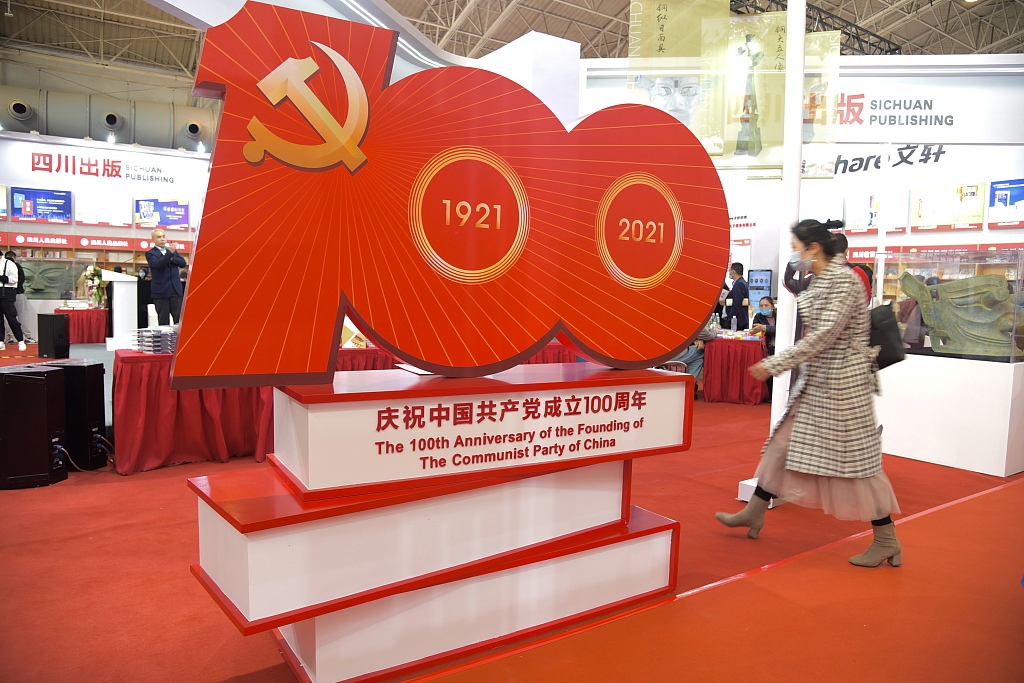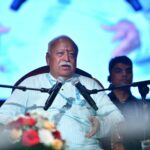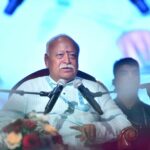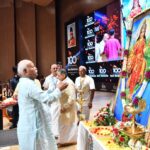
Author : Dr. Ragotham Sundararajan
- The birth of CCP followed events referred to by many in China as the Century of Humiliation.
- The Chinese Communist Party was born in July 1921 with the support of the Soviet Communists and the Comintern, an international organisation promoting Communism worldwide.
- Deng put in place what is called as Four Modernisations, that of Agriculture, Military, Industry and Science and Technology.
- China has virtually become the Factory of the World, manufacturing all the Goods of the world, adopting what it calls Socialism with Chinese Characteristics.
- Communist China and democratic India, two nations trying to find their feet after the end of Colonialism and Imperialism, have had strained and tumultuous relations since 1947.
- The prospect of a Communist, Authoritarian China as the New Hegemonic Power is not being greeted with glee by the geopolitical powers including India.
China is the second most powerful nation in the world, next only to the USA in economic strength. The Chinese Communist Party (CCP) has been at the vanguard of this transformation. As CCP completes a century since its inception in July 1921, it’s imperative to look back at its journey and understand how it has happened, what we can expect in the coming decades and the implications of Communist China’s ascendance to global pole position.

Origins
The birth of CCP followed events referred to by many in China as the Century of Humiliation. China has been a great Eastern Civilisation that called itself the Middle Kingdom or the Center of the Universe. It was ruled by Great Empires and Dynasties like the Ming and Qing dynasties. China is home to one of the well-known philosophers of the East, Confucius. Confucianism has been held in great respect in China till today. China traded heavily with the rest of the world and was among the top two economies of the world, along with India for close to two millennia till 1850, as revealed by the work of Angus Maddison. Chinese inventions such as Compass, Paper and Gunpowder are well known. So, China has been a Great Power.
But all that unravelled in the mid 19th century when Europe, especially the United Kingdom gained ascendancy after the Industrial and scientific revolution began. China was forced to deal with the European Powers on their terms, in a shocking reversal of fortunes. The Opium Wars followed, which China lost heavily. The United Kingdom, as a new Naval Power, started to dedicate terms of Commerce after entering Chinese shores. By this time, Japan had become a force to reckon with, after modernisation under the Meiji restoration. Japan waged war on China and defeated it. China also lost control of Korea which it held for a long time. So, between 1830 and 1920, China declined from being a great Eastern power to one accustomed to defeats by the surging Western Powers. The USA also got into a position of advantage with China with the Most Favoured Nation Status, not necessarily to the liking of China.
As China was experiencing this rapid decline under foreign assault, Communism took roots in Russia under Lenin in 1917. It was also the time of World War I. Under these circumstances, many in China, especially the youth, concluded that Communism was the right approach to liberate their country out of the humiliating situation. So, the Chinese Communist Party was born in July 1921 with the support of the Soviet Communists and the Comintern, an international organisation promoting Communism worldwide.
Post World War II
But the years between 1921 and 1949 were difficult years for the CCP and China. Civil wars and sectarian strife were rampant. Bitter armed conflict between the Nationalists led by Chiang Kai Shek and Communists raged. The second Sino-Japan war also ensued in 1937. The CCP managed to quell all opposition ruthlessly. On October 1, 1949, the People’s Republic of China (PRC) was born in Tiananmen Square. Mao Zedong, a co-founder of CCP became its Chairman and the authoritarian ruler of Communist China (PRC).
In what is referred to as the Cultural Revolution and the Great Leap forward, several ambitious rural development projects were implemented. However, tens of millions of people are considered to have perished due to Mao’s policies and programs.
Under Chairman Mao, Rural development became the primary focus. In what is referred to as the Cultural Revolution and the Great Leap forward, several ambitious rural development projects were implemented. However, tens of millions of people are considered to have perished due to Mao’s policies and programs. When Mao died in 1976, PRC was still a poor, third-world nation struggling to lift her millions out of poverty.
Embracing the West
Deng Xiaoping considered the Architect of Modern China, succeeded Mao as the Supreme Leader of the PRC in 1978. He initiated market economic reforms and steered China away from the Planned economy policies of Mao. During his time, China also came into closer engagement with the Western powers. Deng put in place what is called as Four Modernisations, that of Agriculture, Military, Industry and Science and Technology. When he stepped down in 1989, China was on its way to becoming a global economic power. Jiang Zemin and Hu Jintao as leaders of PRC continued the policies of Deng Xiaoping.
Becoming a Great Power Again
At the turn of the 21st Century, China’s economy was about 1.2 Trillion USD. Since then, China, with massive investments pouring in from the West, especially the USA, has grown at a scorching pace. China is credited to have lifted 600 million people out of poverty in this process and its economy is close to 15 Trillion USD today. China has virtually become the Factory of the World, manufacturing all the Goods of the world, adopting what it calls Socialism with Chinese Characteristics, which includes many aspects of the Capitalist model of development. China has also invested in creating a positive narrative about itself and its national ambitions in the West especially, despite being a totalitarian state with the worst form of censorship and repression.
In 2012, Xi Jinping, son of a party leader once considered the right-hand man of Mao, but exiled during youth, came to the helm of the CCP. In quick time, Xi Jinping has become the most powerful ruler in the history of any nation, heading the CCP, Government and the Military, a feat not managed since Mao’s time. Chairman Xi, has also become President of PRC for Life, more like Emperor Xi. He has talked about the Renewal of the Great Chinese Nation and China becoming the Greatest Power once again with a roaring economy and an Elite military and all the Chinese people enjoying a high standard of living. In what is referred to as a Hundred-Year Marathon by author Michael Pillsbury, China wants to be the Number 1 power in the world by 2049 with a GDP that is double that of the USA.
In quick time, Xi Jinping has become the most powerful ruler in the history of any nation, heading the CCP, Government and the Military, a feat not managed since Mao’s time.
China and India
China and India are neighbours who share borders as well as historical connections. But, Communist China and democratic India, two nations trying to find their feet after the end of Colonialism and Imperialism, have had strained and tumultuous relations since 1947. Indian Prime Minister Nehru’s policies of Pancha Sheel, based on Peace and Cooperation, did not prevent the Indo-China war in 1962, followed by another war in 1967. Since 1945, China became a member of the UNSC and has grown in stature even as India has tried to match Chinese economic and military strength including nuclear capabilities.
China’s continuing territorial claims on parts of India, China’s Overt and Covert support to Pakistan’s policy of sponsoring terror in India has also been a cause of strained relations.
Since the ’80s, there have been efforts to normalise relations but irritants have remained due to China’s continuing territorial claims on parts of India as well as India’s support to the Tibetan cause. Most recently, at Doklam and Galwan, Indian and Chinese troops have come head to head, even resulting in casualties on both sides. China’s Overt and Covert support to Pakistan’s policy of sponsoring terror in India has also been a cause of strained relations. With the power differential with China continuing to grow as we speak, India has to remain wary and cautious of the true motives and designs of China as the latter marches on its path to become a Hegemon.
Questions for China and the Rest of the World, including India
The continued ascendance of China is considered inevitable by many in the world. But the prospect of a Communist, Authoritarian China as the New Hegemonic Power is not being greeted with glee by the geopolitical powers including India, for obvious reasons. Be it the Belt and Road Initiative of Chinese State investment in developing countries, it’s handling of Tibet, Hong Kong or Taiwan or its response in the aftermath of the Covid 19 Pandemic, Communist China’s actions have unnerved and upset most nations of the world. China claims it wants global peace but the People’s Liberation Army talks of unrestricted warfare. Can a Hegemonic Communist China without democracy and openness, looking to avenge its Century of Humiliation, be trusted with the leadership of the world? This is the most critical and consequential question of the 21st Century.
Presently, the answer is not in the affirmative.





